Introduction
Japan has been an important trading partner of Vietnam from the 16th century. The port of Hoi An close to Danang in Central Vietnam was an important trading port and Japanese ships visited this location frequently to undertake trading activities. During the Second World War, Japan exercised control over this region and thereafter relations remained dormant up to 1972. Diplomatic ties were established on 21 September 1972, but active commercial activities between the two countries resumed only after the return of the Vietnamese Army from Cambodia in 1989.
Thereafter relations between the two countries strengthened with Japan’s Official Development Assistance (ODA) resuming in full swing in the year 1992. Since then both the countries have left no stone unturned to enhance their relationship.
Recent Trends
As stated, the new chapter in Vietnamese Japanese relationship began in 1992. Vietnam became a member of the ASEAN in 1995. ASEAN and Japan established formal relations in 1973, which was formalised in March 1977.
Japan has consistently backed all the initiatives of ASEAN and in 1997 Japan became a part of ASEAN+3 along with China and South Korea. Further with the formation of the East Asia Summit in 2005, Japan and Vietnam became part of a larger organisation and currently both of them are active members. They also are official negotiating partners of the Trans Pacific Partnership which also includes the United States.
Japan has contributed immensely to Vietnam’s economic development. ODA contribution itself is more than $ 21 billion. Foreign Direct Investment by Japan in Vietnam translates into 2103 projects with a registered capital of $ 34.5 billion. More than 500,000 Japanese tourists visited Vietnam in the preceding year. The point to note is that both the countries are bonding very closely resulting in mutual benefit.
The current geo political situation presents us with a few hard realities regarding Asia Pacific. China has become the most dominant economic and military power of Asia. Great powers have great ambitions and China has stirred up issues regarding its claims on the islands of the East China Sea, South China Sea and along the Sino-Indian border. This has caused tensions between China on the one hand and Japan, Vietnam and India on the other. The United States with its pivot to Asia policy is attempting to rebalance her naval deployment by positioning six of her Carrier Battle Groups to be positioned in the Asia Pacific Region. Further the US is trying to form a tri lateral alliance between US, India and Japan. Meanwhile, Russia is also gradually entering this region, with arms supplies to China, Vietnam and India. In this situation, the US is looking for a more assertive Japan which could possibly handle security situations independently. This obviously calls for a stronger Japanese Self Defence Forces which can play an operational role in the Western Pacific. It is pertinent to note that due to economic reasons the US is reducing its Defence budget as also the manpower of her Army which would be below the strength that existed during the First World War. Accordingly it is obvious that Japan would have to a large extent resolve strategic issues in the Western Pacific using its Self Defence Forces with limited support from the US.
It is against this backdrop that one has to view Japan’s strategic relations with Vietnam. While Japan has issues with regard to Senkaku islands with China, Vietnam has disputes with regard to Paracel and Spratly islands with China. Militarily China is stronger than Japan and Vietnam. However, strengthened cooperation between Japan and Vietnam would enable them to strategically coordinate their activities resulting in a balanced approach from China. Vietnam and Japan have a strategic agreement since 2009 which is gradually being boosted by political leaders from both countries.
Prime Minister Shinzo Abe, who took over in December 2012 made his first overseas visit to Vietnam from 16 to 17 January 2013. As is well known, during his previous tenure in 2006, he had initiated a strategic dialogue with his Vietnamese counterpart Nguyen Tan Dung. He had clearly stated that the purpose of his visit was due to the common concerns of the two countries in the Asia Pacific region in the spheres of economics and strategy. On a lighter note, he also stated that people of both countries have common cultural traits like using chop sticks, eating rice as the main food and Buddhism. Currently the Vietnamese President Truong Tan Sang is on a four day visit to Japan from March 16 to 19 at the invitation of Japanese Emperor Akihito. The visit is expected to further strengthen economic and strategic relations between the two countries resulting in greater synergy between these nations in the Asia Pacific.
Implications on India
Strategically the Asia Pacific region is extremely important for India. Japan and Vietnam are both strategic partners of India and play a critical role with regard to subsuming China’s assertiveness in the region. The growing strategic partnership between Vietnam and Japan is resulting in both countries re crafting their military strategies and enhancing their defence postures.
India has strong economic relations and strategic partnerships with both Japan and Vietnam. China has disputes with regard to the land border along India and is also engaged in creating a string of pearls by developing port facilities in Bangladesh, Myanmar, Maldives, Sri Lanka and Pakistan. There is a need for India to counter this move by intensifying strategic partnerships with Japan and Vietnam. This can be achieved by greater joint training at the individual and collective level between these countries. Joint trilateral exercises on land and sea would not only improve inter operability but also sensitise China on hard power capabilities of these countries. Further, economic cooperation can be enhanced to ensure greater Comprehensive National Power of the triumvirate.
To maintain strategic balance, the Asian continent must avoid an unchallenged economic as also strategic domination by China. The US is gradually rebalancing its assets to play a supportive role in the continent. To create stability there is a need for economic and strategic synergy between Japan, Vietnam and India. This would allow a stable Asia which can be free of Chinese assertiveness.
Conclusion
The current visit of the Vietnamese President to Japan is likely to strengthen economic and strategic relations between these countries. This is a step in the positive direction which must be utilised by India to strengthen the bond with these countries to stabilise the Asia Pacific. A strong trilateral relationship between the three nations would positively contribute to security in the region.
(The author was India’s Defence Attache to Vietnam)
Published Date: 18th March 2014, http://www.nation.com.pk


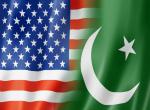

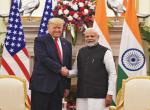
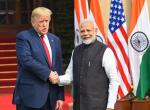
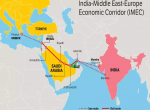
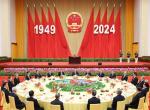
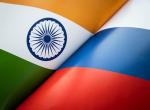
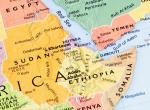
Post new comment